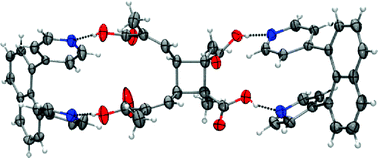Applications of hydrogen-bond-acceptor templates to direct ‘in-phase’ reactivity of a diene diacid in the solid state†‡
Abstract
The hydrogen-bond-acceptor (HBA) templates 2,3-bis(4-methylenethiopyridyl)naphthalene (2,3-nap) and

- This article is part of the themed collection: In honour of the contribution of Japanese scientists to photochemistry

 Please wait while we load your content...
Please wait while we load your content...